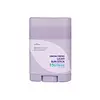What's inside
What's inside
 Key Ingredients
Key Ingredients

 Benefits
Benefits

 Concerns
Concerns

 Ingredients Side-by-side
Ingredients Side-by-side

Dimethicone
EmollientSilica
AbrasiveIsododecane
EmollientEthylhexyl Salicylate
UV AbsorberSynthetic Wax
AbrasiveEthylhexyl Olivate
Skin ConditioningOryza Sativa Bran Wax
Skin ConditioningButyloctyl Salicylate
Skin ConditioningC12-15 Alkyl Benzoate
AntimicrobialDiethylamino Hydroxybenzoyl Hexyl Benzoate
UV FilterEthylhexyl Triazone
UV AbsorberCopernicia Cerifera Wax
Bis-Ethylhexyloxyphenol Methoxyphenyl Triazine
Skin ConditioningLauryl Laurate
Skin ConditioningOzokerite
Emulsion StabilisingCyclopentasiloxane
EmollientSalicylic Acid
MaskingCentella Asiatica Extract
CleansingCamellia Sinensis Leaf Oil
AntioxidantParfum
MaskingDimethicone Crosspolymer
Emulsion StabilisingTocopheryl Acetate
AntioxidantPentaerythrityl Tetra-Di-T-Butyl Hydroxyhydrocinnamate
AntioxidantDimethicone, Silica, Isododecane, Ethylhexyl Salicylate, Synthetic Wax, Ethylhexyl Olivate, Oryza Sativa Bran Wax, Butyloctyl Salicylate, C12-15 Alkyl Benzoate, Diethylamino Hydroxybenzoyl Hexyl Benzoate, Ethylhexyl Triazone, Copernicia Cerifera Wax, Bis-Ethylhexyloxyphenol Methoxyphenyl Triazine, Lauryl Laurate, Ozokerite, Cyclopentasiloxane, Salicylic Acid, Centella Asiatica Extract, Camellia Sinensis Leaf Oil, Parfum, Dimethicone Crosspolymer, Tocopheryl Acetate, Pentaerythrityl Tetra-Di-T-Butyl Hydroxyhydrocinnamate
Caprylyl Methicone
Skin ConditioningMethyl Methacrylate Crosspolymer
Isopropyl Palmitate
EmollientDibutyl Adipate
EmollientSynthetic Wax
AbrasiveCoco-Caprylate/Caprate
EmollientButyloctyl Salicylate
Skin ConditioningSilica
AbrasiveVinyl Dimethicone/Methicone Silsesquioxane Crosspolymer
Diethylamino Hydroxybenzoyl Hexyl Benzoate
UV FilterBis-Ethylhexyloxyphenol Methoxyphenyl Triazine
Skin ConditioningEthylhexyl Triazone
UV AbsorberMicrocrystalline Wax
Emulsion StabilisingPolysilicone-15
UV FilterEthylhexyl Palmitate
EmollientVinyldimethicone
Camellia Japonica Seed Oil
EmollientAllium Cepa Bulb Extract
Skin ConditioningHouttuynia Cordata Extract
Skin ConditioningCryptomeria Japonica Leaf Extract
HumectantNelumbo Nucifera Leaf Extract
Skin ConditioningSaccharomyces Ferment
Skin ConditioningPolyglyceryl-4 Diisostearate/Polyhydroxystearate/Sebacate
EmulsifyingPolymethyl Methacrylate
Bisabolol
MaskingWater
Skin ConditioningIsododecane
EmollientOctyldodecanol
EmollientAdenosine
Skin ConditioningPolyglyceryl-4 Isostearate
EmulsifyingTriethoxycaprylylsilane
Isopropyl Titanium Triisostearate
EmollientAluminum Hydroxide
Emollient1,2-Hexanediol
Skin ConditioningPhytosterols
Skin ConditioningAcetyl Glucosamine
Skin ConditioningAllantoin
Skin ConditioningNiacinamide
SmoothingButylene Glycol
HumectantZinc PCA
HumectantCI 77007
Cosmetic ColorantCI 77891
Cosmetic ColorantCaprylyl Methicone, Methyl Methacrylate Crosspolymer, Isopropyl Palmitate, Dibutyl Adipate, Synthetic Wax, Coco-Caprylate/Caprate, Butyloctyl Salicylate, Silica, Vinyl Dimethicone/Methicone Silsesquioxane Crosspolymer, Diethylamino Hydroxybenzoyl Hexyl Benzoate, Bis-Ethylhexyloxyphenol Methoxyphenyl Triazine, Ethylhexyl Triazone, Microcrystalline Wax, Polysilicone-15, Ethylhexyl Palmitate, Vinyldimethicone, Camellia Japonica Seed Oil, Allium Cepa Bulb Extract, Houttuynia Cordata Extract, Cryptomeria Japonica Leaf Extract, Nelumbo Nucifera Leaf Extract, Saccharomyces Ferment, Polyglyceryl-4 Diisostearate/Polyhydroxystearate/Sebacate, Polymethyl Methacrylate, Bisabolol, Water, Isododecane, Octyldodecanol, Adenosine, Polyglyceryl-4 Isostearate, Triethoxycaprylylsilane, Isopropyl Titanium Triisostearate, Aluminum Hydroxide, 1,2-Hexanediol, Phytosterols, Acetyl Glucosamine, Allantoin, Niacinamide, Butylene Glycol, Zinc PCA, CI 77007, CI 77891
 Reviews
Reviews

Ingredients Explained
These ingredients are found in both products.
Ingredients higher up in an ingredient list are typically present in a larger amount.
You might know this ingredient as Tinosorb S or Bemotrizinol. It is a UV filter that covers both UVA and UVB rays.
This ingredient has two peak UV absorption peaks ( 310 and 340 nm) and is able to absorb both UV-A and UV-B rays. This ingredient works by preventing UV rays from reaching and damaging your skin.
On top of that - it is highly photostable and helps prevent the photodegration of other sunscreen ingredients such as avobenzone.
Tinosorb S is allowed in the EU, Australia, and Asia. It is close to being approved by the FDA and we'll hopefully get this ingredient in the U.S. by late 2025.
Fun fact: Tinosorb S is the most effective UV absorber at maximum concentration (measured by SPF) permitted in the EU.
This ingredient is oil-soluble, so your oil-cleansers will take this right off at night.
Learn more about Bis-Ethylhexyloxyphenol Methoxyphenyl TriazineButyloctyl Salicylate is a chemical UV filter structurally similar to octisalate. It is a photostabilizer, SPF booster, emollient and solvent. This ingredient helps evenly spread out ingredients.
According to a manufacturer, it is suitable for pairing with micro Titanium Dioxide, Zinc Oxide, and pigments.
Photostabilizers help stabilize UV-filters and prevents them from degrading quickly.
Learn more about Butyloctyl SalicylateDiethylamino Hydroxybenzoyl Hexyl Benzoate (DHHB) is a chemical UV-A absorber. It is formulated for high UVA protection (320-400 nm).
DHHB is well-liked for:
DHHB has been approved by the EU, Japan, Taiwan, and South America for use up to 10%. Unfortunately, it has not been approved for use in the US or Canada due to slow regulatory processes.
This ingredient is soluble in oils, fats, and lipids.
Learn more about Diethylamino Hydroxybenzoyl Hexyl BenzoateEthylhexyl Triazone is a modern chemical sunscreen that protects from UV-B radiation.
It is the most effective of existing UV-B filters, as it provides the highest level of photo-stable absorption. It protects from the entire UV-B range (280 to 320nm), with it's highest level of protection at 314nm.
Ethylhexyl Triazone is oil soluble, oderless and colorless, which mean it is able to be incorporated into a variety of different formulations.
It is not currently available within the United States due to slow changing FDA regulations. Outside of the US, it is used in formulations at concentrations up to 5%.
Learn more about Ethylhexyl TriazoneIsododecane is a fragrance, emollient, and solvent.
As an emollient, it helps your skin stay soft and hydrated. Emollients help trap moisture into your skin.
Isododecane's role as a solvent makes it a great texture enhancer. It spreads smoothly on skin and does not leave a sticky feeling behind. Isododecane also helps prevent color transfer in makeup products.
Isododecane is not absorbed into skin.
Learn more about IsododecaneSilica, also known as silicon dioxide, is a naturally occurring mineral. It is used as a fine, spherical, and porous powder in cosmetics.
Though it has exfoliant properties, the function of silica varies depending on the product.
The unique structure of silica enhances the spreadability and adds smoothness, making it a great texture enhancer.
It is also used as an active carrier, emulsifier, and mattifier due to its ability to absorb excess oil.
In some products, tiny microneedles called spicules are made from silica or hydrolyzed sponge. When you rub them in, they lightly polish away dead skin layers and enhance the penetration of active ingredients.
Learn more about SilicaSynthetic Wax is created from fossil fuels such as natural gas. It is used to enhance texture, adjust pH, and as an occlusive.
It may also be used as an abrasive ingredient to exfoliate the skin.
Synthetic Wax may not be fungal acne safe.
Learn more about Synthetic Wax